Memory and light loads
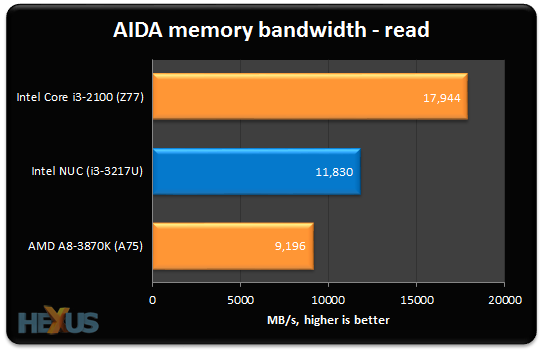
Synthetic benchmarks are a measure of the CPU and memory subsystem quality. Intel's dual-channel memory controller historically scores better than AMD's. But the NUC's bandwidth is some way below that of a desktop Core i3, albeit one run with DDR3-1,600 memory instead of DDR3-1,333.
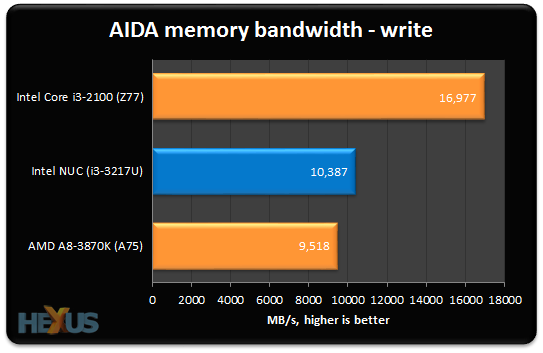
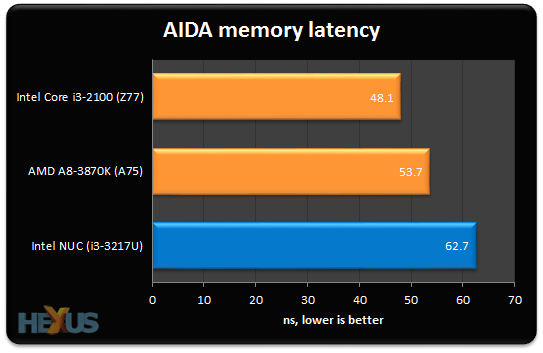
Latency, too, is higher than what we'd expect. It's worth underscoring the fact that we're dealing with a pre-production system that's not optimised for performance.
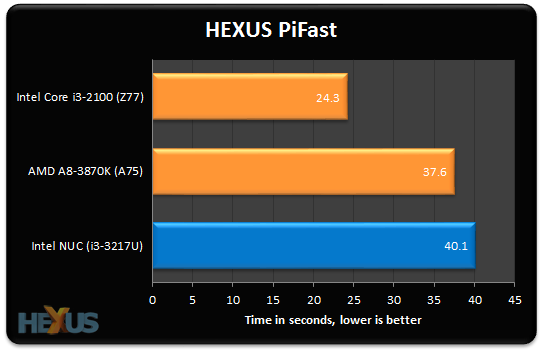
HEXUS PiFast provides a reasonable guide to comparative performance in lightly-threaded applications. NUC's non-Turboing CPU gives away more than 1GHz in frequency when viewed against the desktop duo. Having run this benchmark for over 10 years and subsequently gained insight into how it correlates to real-world use, a 40-second time indicates that NUC should be just fine for everyday tasks.
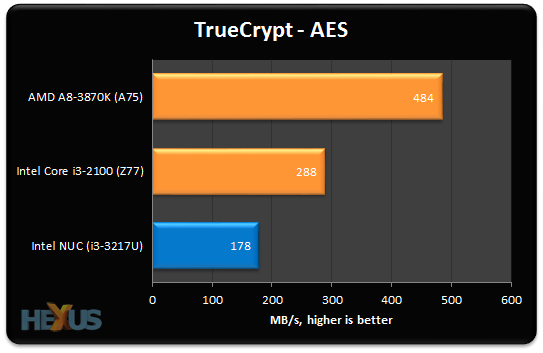
These three chips don't carry the requisite AES-NI hardware to accelerate TrueCrypt's AES encryption/decryption test. It's a matter of pure grunt, and AMD's A8-3870K wins out. One would expect a score of 1,500MB/s for an AES-enabled processor.









